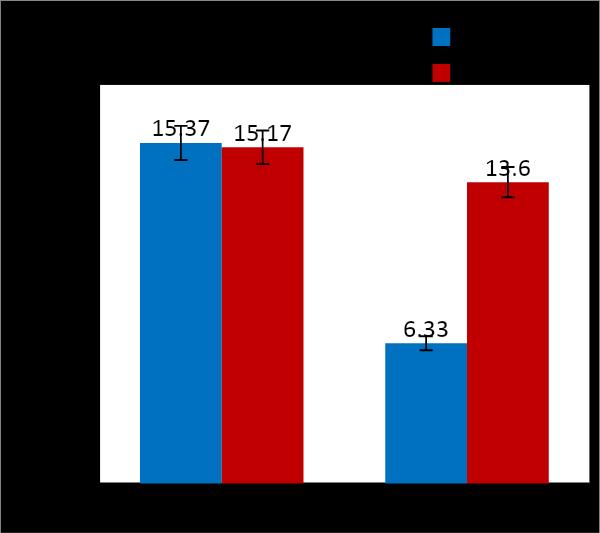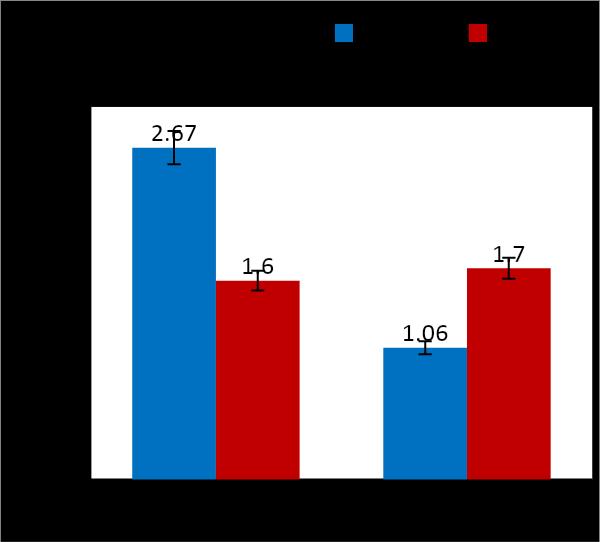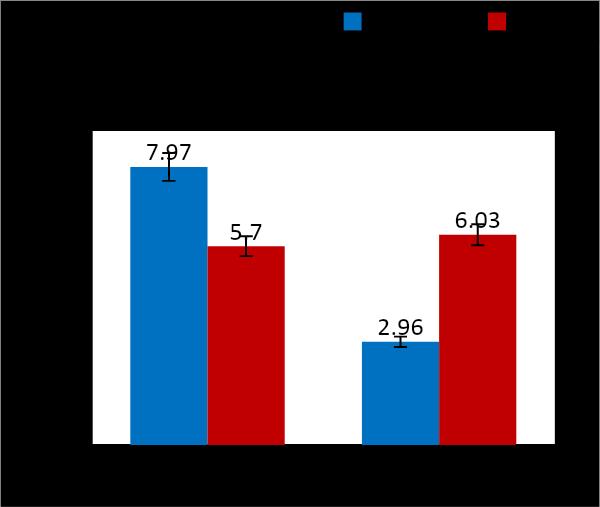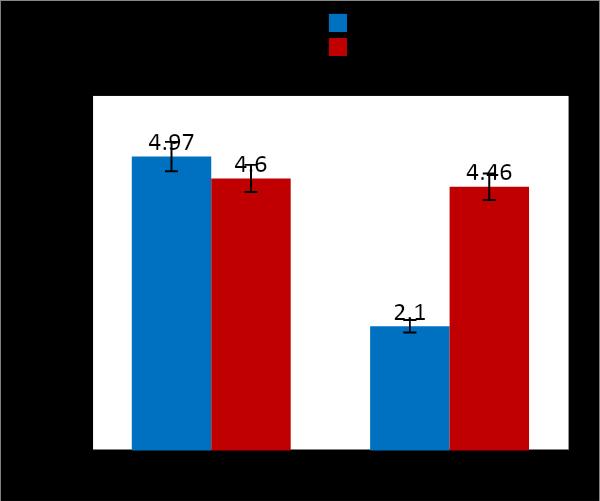International Journal of Healthcare Sciences ISSN 2348-5728 (Online)
Vol. 10, Issue 1, pp: (43-49), Month: April 2022 - September 2022, Available at: www.researchpublish.com

International Journal of Healthcare Sciences ISSN 2348-5728 (Online)
Vol. 10, Issue 1, pp: (43-49), Month: April 2022 - September 2022, Available at: www.researchpublish.com
K.S. Chethana1 , Satyapriya Maharana2, Mangesh Pandey3
1MSc, Research Student, Division of Yoga & Life Sciences, SVYASA (Deemed to be University), Bengaluru, India.
2PhD, Assistant Professor, Division of Yoga & Life Sciences, SVYASA (Deemed to be University), Bengaluru, India.
3M.Sc. Assistant Professor, Division of Yoga & Life Sciences, SVYASA (Deemed to be University), Bengaluru, India.
DOI: https://doi.org/10.5281/zenodo.6623456
Published Date: 08-June-2022
Abstract: Introduction: Menopause means the natural and permanent stopping of the monthly female reproductive cycles. During this phase menopausal woman’s have many symptoms and difficulties such as hot flushes, headache, profuse night sweating, fatigue, hair loss, insomnia, weight gain, joint pain, muscle pain, dry skin, vaginal dryness and mood disorders. Yoga has been proved as an alternative therapy of various clinical conditions.
Aim: To assess the effect of Trataka practices on women with menopausal symptoms.
Method: Two group experimental pre post design were conducted on 60 menopausal women age range between 35 to 55 years35 to 55 years (y= 43.30±6.18, C= 40.10±5.37: Mean/SD). Thirty women in each group were divided into yoga and control group. Women having clinical physical and mental illness were excluded. Informed consent form was obtained from all the participants. Intervention group practiced Trataka session for 40 minutes per day for fifteen days. Control group followed their routine activity. Menopause Rating Scale (MRS) assessed as pre and post on the day 1 and day 15 after intervention.
Result: Total menopause symptoms reduced (58.81%, p<0.001) in yoga intervention group compared to control group. Somatic Symptoms reduced (57.74%, p<0.004), Psychological symptoms reduced (62.86%, p<0.001), Urogenital Symptoms reduced (60.29%, P<0.130) and the scores in the yoga group showed a reduction in score on all the subscales compared to the control group.
Conclusion: Fifteen days of Trataka practice is effective in reducing the total menopausal symptoms.
Keywords: Trataka, Female, Yoga, Menopause, Total Menopause Rating Scale (MRS).
Natural menopause is diagnosed clinically by collection the information after 12 consecutive months of amenorrhea. In the present time, with increased life expectancy, women spend one-third of their life after menopause. Menopause signifies the stopping of ovarian functions and ends the reproductive potential [1] It is the time in a woman’s life when menstruation eventually stops and the woman goes through a number of changes, physically as well as mentally. It is normally occurs in women at the age between 45 - 55. Menopause is complete when the woman has not had her menses for 1 year. Early Menopausal phase is the period immediately following menopause i.e., once menopause is complete [2]
Symptoms vary from woman to woman. The first symptom is irregularity of menstrual cycle. In some cases menses will occur around every 3 weeks. This might last for 1 - 3 years before the menses completely stop. During menopause, the ovaries produce less estrogen and progesterone and changes in these hormones cause menopausal symptoms. Menses
International Journal of Healthcare Sciences ISSN 2348-5728 (Online)
Vol. 10, Issue 1, pp: (43-49), Month: April 2022 - September 2022, Available at: www.researchpublish.com
occur less often and eventually stop. Sometimes this happens suddenly. But most of the time, menses slowly stop over time [3]
Globally, women experience symptoms during menopause ranges between 50–75%. In India it is (87.7%). Over one-third premenopausal (38%), menopause and postmenopausal (54%), Anxiety (80%), Physical and mental exhaustion (71%), Sleep problem (61.2%), joint and muscular discomfort (56%), hot flashes (36.7%) [4]
Common symptoms of menopause such as less occurrence of menstrual cycle and permanent cessation, heart pounding or racing, hot flashes, usually worst during the first 1 - 2 years, night sweats, skin flushing, sleeping problems including insomnia. Other symptoms of menopause may include decreased interest in sex, possibly decreased response to sexual stimulation, forgetfulness in some women, headaches, mood swings including irritability, depression, and anxiety, urine leakage, vaginal dryness and painful sexual intercourse, Vaginal infections, joint aches and pains, palpitations [1] [2] [3]
Treatment for menopause depends on many factors, including how severe the symptoms are and the overall health of the woman. It may include lifestyle changes or hormone therapy. Hormone therapy may help if the woman has severe hot flashes, night sweats, mood issues, or vaginal dryness. Hormone therapy is the use of hormones in medical treatment sometimes estrogen alone or estrogen plus progesterone. However, several major studies have questioned the health benefits and risks of hormone therapy, including the risk of developing breast cancer, heart attacks, strokes, and blood clots. [2] [3] [5] Diet and Lifestyle changes such as avoiding caffeine, alcohol, spicy foods etc, eating plenty of Calcium and Vitamin D in food or as supplement have been evaluated as alternative therapies for the treatment of menopausal symptoms [5]
Yoga is a commonly known as physical, mental, and spiritual disciplines. Yoga helps to improve flexibility, strength and balance and helps to relax even in the midst of a stress stricken environment. It helps the person to become more aware of the body’s posture, alignment and patterns of movement.
Previous studies have shown the benefits of yoga therapy in treating the menopausal symptoms. Four weeks on every alternate day for 30 days of yoga (pranayama, suryanamaskar and savasana) intervention showed a statistically significant reduction in the total MRS score, scores on all the 3 subscales of MRS as well as MENQOL score [6] A prospective nonrandomized control study of 216 perimenopausal women with 12 weeks of yoga is effective in managing the distressing perimenopausal symptoms and helping the well-being of perimenopausal women [7] Eight weeks of an integrated approach to yoga therapy decreases climacteric symptoms, perceived stress, and neuroticism in perimenopausal women better than physical exercise [8]
The intervention of Trataka included set of procedures including eye exercises and gazing at the candle flame with focused attention followed by defocusing. Breathing and chanting also included in the practice which helps to promotes internal awareness and focusing on the practice followed by defocusing. Each session was of 30 min duration. Earlier studies demonstrated positive effect of Trataka on physiological parameters [9] Jyoti-Trataka is a good yogic complementary therapy that can be used to regulate autonomic functions, blood glucose, and IOP in T2DM patients with high-tension of (POAG) primary open-angle glaucoma. [10] The practice of Trataka leads to significant reduction in blood pressure and heart rate in patients of 60 subjects with primary hypertensive. [11] There was significant difference on pulse rate to compare the Trataka practice between pre and posttest of college level male students [12] The practice of short term Trataka leads to significantly reduced systolic blood pressure and no significantly reduced diastolic blood pressure on college level female students. [13] The practice of Trataka leads to increased vagal tone and reduced sympathetic arousal [14]
There is less evidence on the effects of yoga on somatic, psychological and urogenital symptoms associated with the early post-menopausal phase also with respect to Trataka during this phase. Hence, the present investigation is aimed to find out the effect of Trataka on menopausal symptoms of menopausal women after a short term 15 days Trataka intervention.
Aim & Objectives: The aim of the present study is to see the effect of Trataka on menopausal symptoms of menopausal.
Two group experimental pre post design were conducted on sixty menopausal women age range between 35 to 55 years in this study. 30 women’s each group was divided into two groups- yoga intervention group and control group. Women
International Journal of Healthcare Sciences ISSN 2348-5728 (Online)
Vol. 10, Issue 1, pp: (43-49), Month: April 2022 - September 2022, Available at: www.researchpublish.com
having clinical physical & mental illness were excluded. Informed consent form was obtained from all the participants. The two group pre post design. Intervention group practice Trataka session for 40 minutes/day for fifteen days. Control group followed their routine activity. Menopause Rating Scale (MRS) assessed as pre and post on the day 1 and day 15 after intervention.
For the intervention group, assessments were conducted on day one before intervention, immediately after Trataka intervention on day one, and after one month of Trataka intervention. In the wait list control group, data was taken on day one before the quite sitting and after 30 min of quite sitting and at the end of one month.
All 60 subjects successfully completed the first follow-up on day one& Day 15 (post intervention).
The intervention of Trataka included set of procedures including eye exercises and gazing at the candle flame with focused attention followed by defocusing. Breathing and chanting were also included in the practice that promotes internal awareness and focusing on the activity followed by defocusing. Each session was of 30 min duration [Table-1] Classes were conducted on everyday basis, except for Sundays and attendance was also recorded. Data of only those participants who had completed a minimum of (75%) and above class attendance was analyzed.
Intervention Details:
1.Eye exercises
Up and down Right and left Diagonal movements
Table-1: Trataka practice module: [15] & [16]
Rotation (clockwise & anti clockwise)
2. JathruTrataka
VamanajatruTrataka DhakshinijatruTrataka Nasakagradrustivikasaka Brumadhyadrustivikasaka
3. JyothiTrataka
Effortless focus Intensive focus De focus
10 rounds (simple palming) 10 rounds (simple palming) 10 rounds (press and release palming) 3 rounds (each) (constant palming)
1 round (Press and release palming) 1 round (press and release palming) 30 seconds focus (press and release palming) 30 seconds focus (press and release palming)
1 minute (press and release palming) 1 minute (constant palming) 1 minute (constant palming + bhramari)
4. Silence Breath aware with silence
The MRS has been designed to measure the health-related quality of life of ageing women. It was developed by the Berlin Centre for Epidemiology Health Research and validated from the research network of many institutes. It consists of 11 symptoms with scores varying from 0 (no symptom) to 4 (severe symptoms), the total score ranging from 0 to 44. Three independent dimensions are identified: somato vegetative symptoms (0–16 points, four symptoms are sweating/flush, cardiac complaints, sleeping disorders and joint and muscle complaints), psychological symptoms (0–16 points, four symptoms are depression, irritability, anxiety and exhaustion) and urogenital symptoms (0–12 points, three symptoms are sexual problems, urinary complaints and vaginal dryness). [17]
The Reliability measures (consistency and test-retest stability) were found to be good across countries. The Validity of the internal structure of the MRS across countries was astonishingly similar to conclude that the scale really measures the same phenomenon in symptomatic women. The sub-scores and total score correlations were high (0.7–0.9) but lower among the sub-scales (0.5–0.7). This however suggests that the subscales are not fully independent. [18]
Data was entered through the Google form before intervention and after intervention. From the Google form data were extract into excel file. From the excel file final data were taken for analysis.
International Journal of Healthcare Sciences ISSN 2348-5728 (Online)
Vol. 10, Issue 1, pp: (43-49), Month: April 2022 - September 2022, Available at: www.researchpublish.com
Data were analyzed by using SPSS 20 software. The data at baseline was assessed for normality using Shapiro-Wilk test. There were no group differences at baseline in all outcome variables. Both the groups were comparable at baseline, on all outcome variables. As the data was not normally distributed, the pre-post comparisons were done by MannWhitney-sign rank test.
SL No Variables Yoga N=30 Control N=30
1. Age: No of women age 40- 45 years 46- 50 years 51 to 55 years
2. Menopausal status
Pre menopause Irregular menses cycle Menopause Post-menopausal
17(56.66%) 11 (36.66%) 02 (0.66%)
12 (40.00%) 16 (53.33%) 2 (0.66%) 0
19 (63.33%) 11 (36.66%) -
17 (56.66%) 13 (43.33 %) 0 0
3. Occupation Working House wife 05 (16.66 %) 25 ( 83.00 %) 18 (60.00%) 12 (40.00%)
Total menopause symptoms reduced (58.81%, p<0.001) in yoga intervention group compared to control group. Somatic Symptoms reduced (57.74%, p<0.004), Psychological symptoms reduced (62.86%, p<0.001), Urogenital Symptoms reduced (60.29%, P<0.130) but the reduction was non-significant and the scores in the yoga group showed a reduction in score on all the subscales compared to the control group.
Table -1: Changes on the sub scale of Menopause Rating Scale (Somatic symptoms, psychological symptoms &urogenital symptoms)
Variable Yoga N=30 % Change Control N =30 % Change
Sig- P values Between Grp (Mann-Whitney-sign rank test) PRE Mean/SD POST Mean/SD PRE Mean/SD POST Mean/SD Somatic Symptoms 4.97±1.82 2.10±1.62 57.74 4.60±3.86 4.46±3.62 3.04 0.237 0.004* Psychological symptoms 7.97±2.84 2.96±3.07 62.86 5.70±3.59 6.03±3.49 5.78 0.015 0.001* Urogenital Symptoms 2.67±2.46 1.06±1.52 60.29 1.60±1.99 1.70±1.84 6.25 0.047 0.130
Note: All values are mean± Standard Deviation. *P value: p<0.001
Table -2: Changes on Total menopausal rating scale
Variable Yoga N=30 % Change Control N =30 % Change
PRE Mean/SD POST Mean/SD PRE Mean/SD POST Mean/SD
Sig- P values Between Grp (Mann-Whitney-sign rank test)
Total Menopause Rating Scale 15.37±4.16 6.33±5.43 58.81 15.17±5.22 13.60±5.69 10.34 0.941 0.001
International Journal of Healthcare Sciences ISSN 2348-5728 (Online)
Vol. 10, Issue 1, pp: (43-49), Month: April 2022 - September 2022, Available at: www.researchpublish.com
Figure-1: Changes on Somatic symptoms
Figure-2: Changes in psychological symptoms
Figure-3: changes on Urogenital symptoms Figure-4: changes on Total Menopause Rating Scale




IV. DISCUSSION
Present study demonstrated fifteen days of Trataka is effective in reducing the somatic symptoms, psychological, urogenital symptoms and also in total menopausal symptoms. A total of 60 participants were subjected to a single practice of Trataka continuously for 15 days. The present study showed a reduction in somatic scale symptoms (57.74%), psychological scale (62.86%) and urogenital scale (60.29%) in female. There was a reduction of menopause symptoms in total score (58.81%) after yoga intervention.
Four weeks on every alternate day for 30 days of yoga (pranayama, suryanamaskar and savasana) intervention showed a statistically significant 42.80 % reduction in the total MRS score, scores on all the 3 subscales of MRS [6]
A prospective, randomized, controlled and interventional study for 90 days with yoga (asana, pranayama and meditation) under supervision for three months showed a statistically significant 53.46 % reduction in menopausal symptoms and all the subscales [15]
The benefits of Trataka practice has been highlighted in previous studies in different condition like positive changes in blood pressure & Heart rate, [11] pulse rate, [12] systolic blood pressure [13] reduced sympathetic arousal [14] and improved autonomic function, blood glucose in T2DM patients with high-tension of (POAG) primary open-angle glaucoma. [10]
International Journal of Healthcare Sciences ISSN 2348-5728 (Online)
Vol. 10, Issue 1, pp: (43-49), Month: April 2022 - September 2022, Available at: www.researchpublish.com
Trataka practice has shown positive effects in autonomic function, physiological condition like blood pressure, blood glucose, primary open-angle glaucoma, pulse rate, vagal tone etc. But nostudy has been conducted till date on menopausal symptoms. This is the first study reporting onTrataka intervention in menopausal condition. It has been observed in earlier studies about the positive effect of yoga on Menopausal Rating Scale. [6] & [15] Trataka also being a yogic practice, present finding is consistent with earlier yoga intervention study effects. Present study with Trataka intervention showed the significant improvement in total menopausal symptoms & in all the sub scales of menopausal symptoms. Thus, practice of Tratakais effective in reducing menopausal symptoms.
Strength of the study is all the 60 women were regular in practice till the end of the intervention. It is the first attempt of Trataka intervention on menopausal symptoms with a matched control group.
Limitations of the study were short term intervention period, online intervention, moderate sample size and, not having the objective variables.
Suggestion for global application were the duration of intervention should be longer, large sample size, should have off line intervention, need additional objective clinical assessments to explore the potential benefits of Trataka
Fifteen days of Trataka practice is effective in reducing the total menopausal symptoms in total menopausal symptoms.
[1] Sherman, S. (2005). Defining the menopausal transition, American Journal of medicine. 118 (supplement 12); 3-7.
[2] Dutta D.C. (2020). Text book of Gynaecology & Obstetrics.
[3] Sulabha, J., Rambhau, K., Dinesh, B. & Ujwala, D. (2011). Effect of yoga on menopausal symptoms. Menopause Int, 17, (3), 78-81.
[4] Kalhan, M., Singhania, K., Choudhary, P., Verma, S., Kaushal, P., & Singh, T. (2020). Prevalence of menopausal symptoms and its effect on quality of life among rural middle aged women (40–60 Years) of Haryana, India. Int j appl basic med res, 10(3), 183.
[5] Newton, K. M., Buist, D. S., Keenan, N. L., Anderson, L. A., & LaCroix, A. Z. (2002). Use of alternative therapies for menopause symptoms: results of a population-based survey. Obstet Gynecol, 100(1), 18-25.
[6] Vora, R., &Dangi, A. (2014). Effect of yoga on menopausal symptoms in the early menopausal period: a randomized controlled trial. Indian J Physiother Occup Ther, 8(3), 49.
[7] Nayak, G., Kamath, A., Kumar, P. N., & Rao, A. (2014). Effect of yoga therapy on physical and psychological quality of life of perimenopausal women in selected coastal areas of Karnataka, India, J Mid-Life Health, 5(4), 180.
[8] Chattha, R., Raghuram, N., Venkatram, P., & Hongasandra, N. R. (2008). Treating the climacteric symptoms in Indian women with an integrated approach to yoga therapy: a randomized control study, Menopause, 15(5), 862870.
[9] Talwadkar, S., Jagannathan, A., & Raghuram, N. (2014). Effect of trataka on cognitive functions in the elderly. IJoY, 7(2), 96.
[10] Ismail, A. M. A., Saif, H. F. A. E. A., & Mohamed, A. M. E. M. (2021). Effect of Jyoti-Trataka on intraocular pressure, autonomic control, and blood glucose in diabetic patients with high-tension primary open-angle glaucoma: a randomized-controlled trial, J Complement Integr Med.
[11] Kusuma, A. S., Nandeesh, N. S., Shetty, S., & Shetty, P. (2021). Immediate effect of Trataka on blood pressure indices in individuals with primary hypertension a randomized controlled trial, Arter Hypertens, 25(2), 82-87.
[12] Bhadra, C., & Chatterjee, K. (2018). Effect of Trataka on pulse rate of college level male students. Int J Yogic Hum Mov Sports Sci, 3, 873-5.
[13] Bhadra C, Chatterjee K. (2017). Effect of Trataka on blood pressure of college level female students. Int j yoga physiother, 2:32-4.
International Journal of Healthcare Sciences ISSN 2348-5728 (Online)
Vol. 10, Issue 1, pp: (43-49), Month: April 2022 - September 2022, Available at: www.researchpublish.com
[14] Raghavendra, B. R., & Ramamurthy, V. (2014). Changes in heart rate variability following yogic visual concentration (Trataka). Heart India, 2(1), 15.
[15] Swami Muktibodhananda, S., & Satyanand-Swaraswati, S. (1998). Hatha Yoga Pradipika. Yoga Publication Trust
[16] Mukherjee, M. V., & Das, M. D. K. (2020). Effect of jyoti trataka in reducing stress among female teachers due to extensive copy checking.
[17] Joshi, S., Khandwe, R., Bapat, D., & Deshmukh, U. (2011). Effect of yoga on menopausal symptoms. Menopause Int, 17(3), 78-81.
[18] Heinemann, K., Ruebig, A., Potthoff, P., Schneider, H. P., Strelow, F., Heinemann, L. A., & Thai, D. M. (2004). The Menopause Rating Scale (MRS) scale: a methodological review, Health Qual Life Outcomes, 2(1), 1-8.